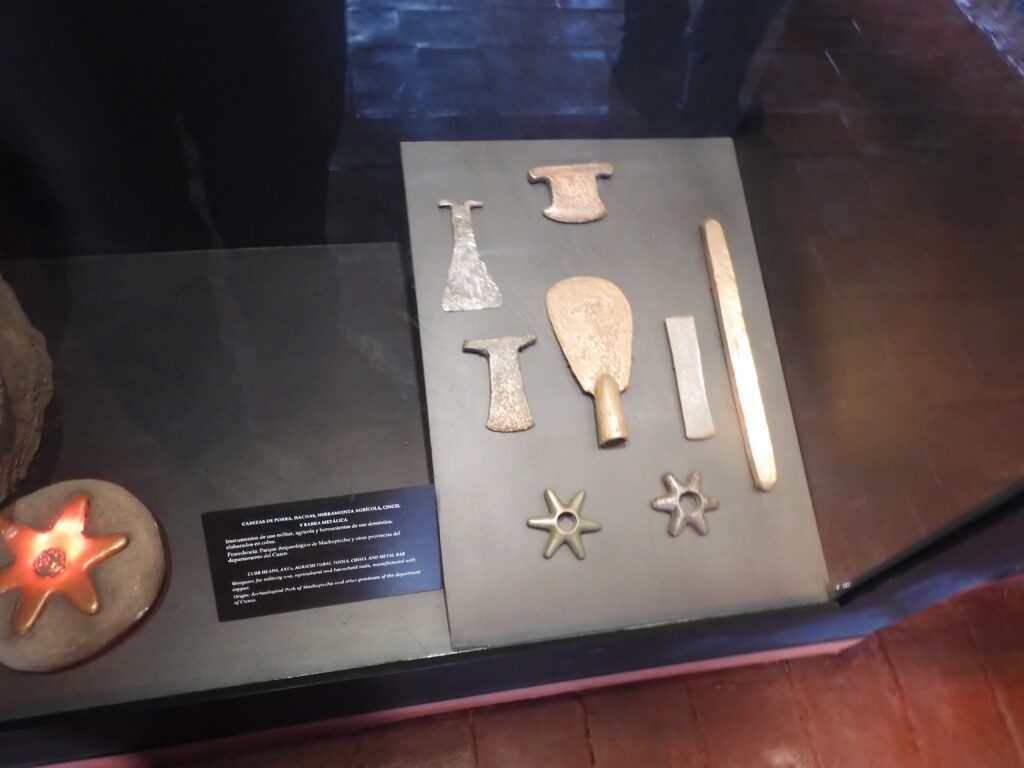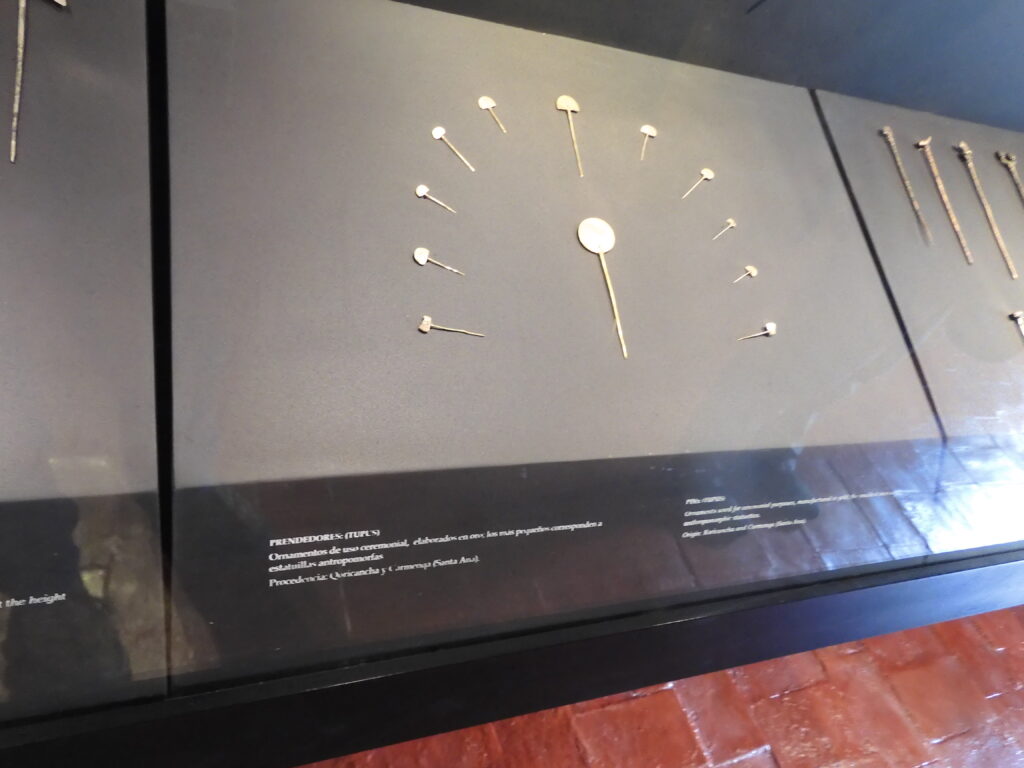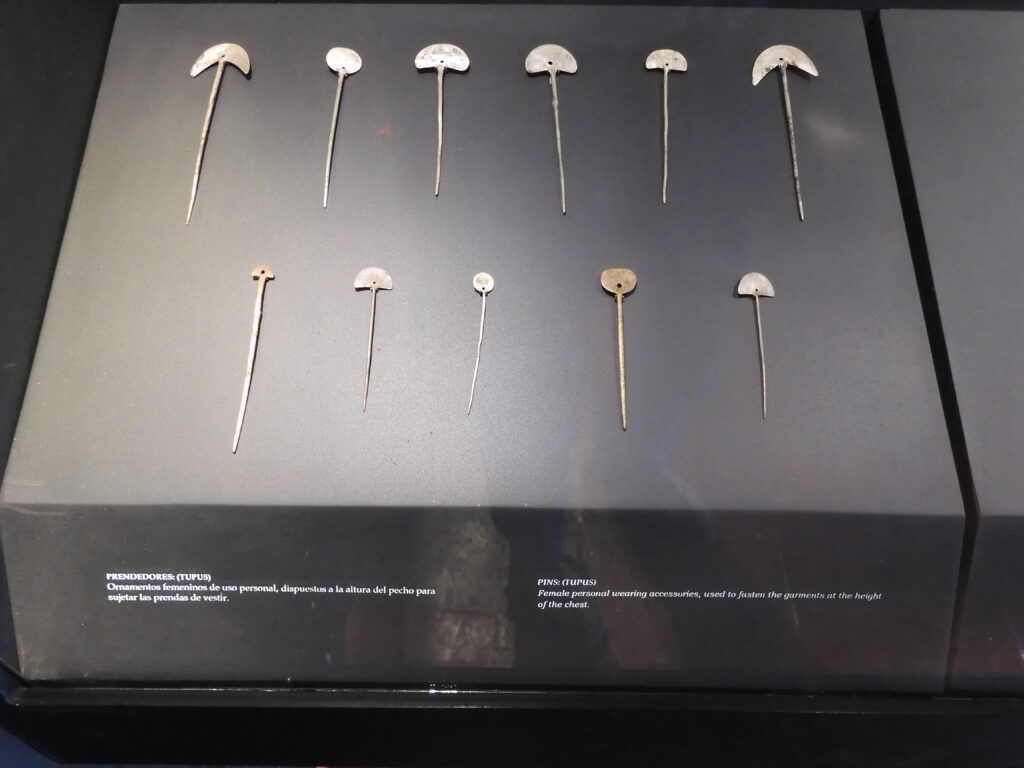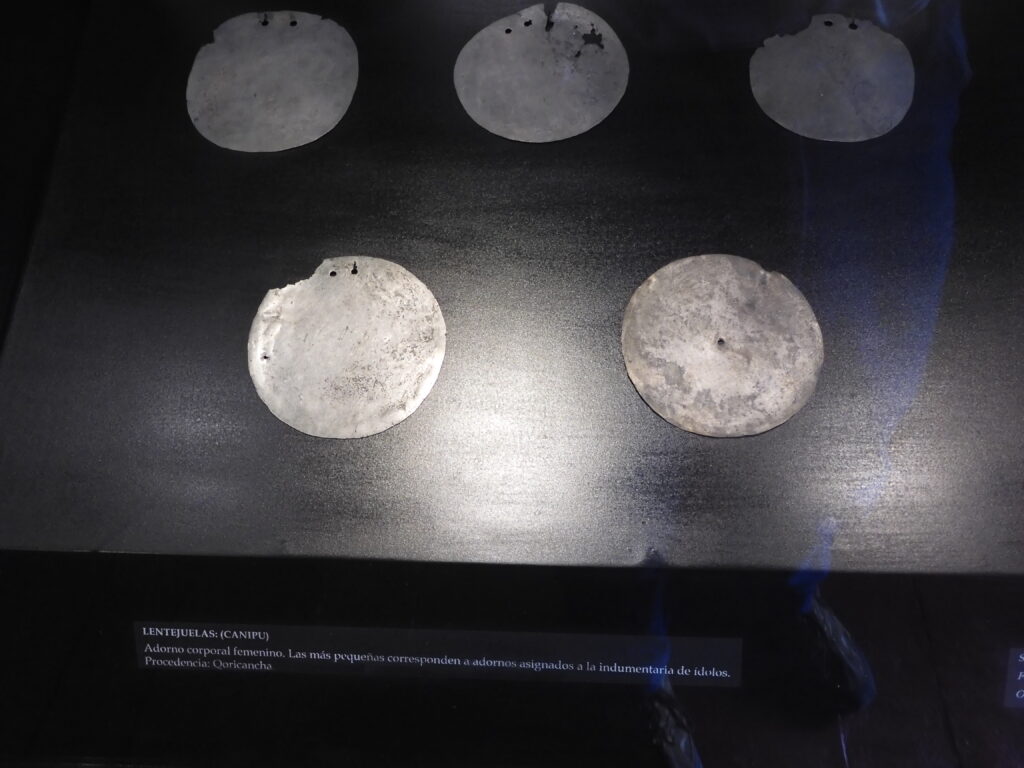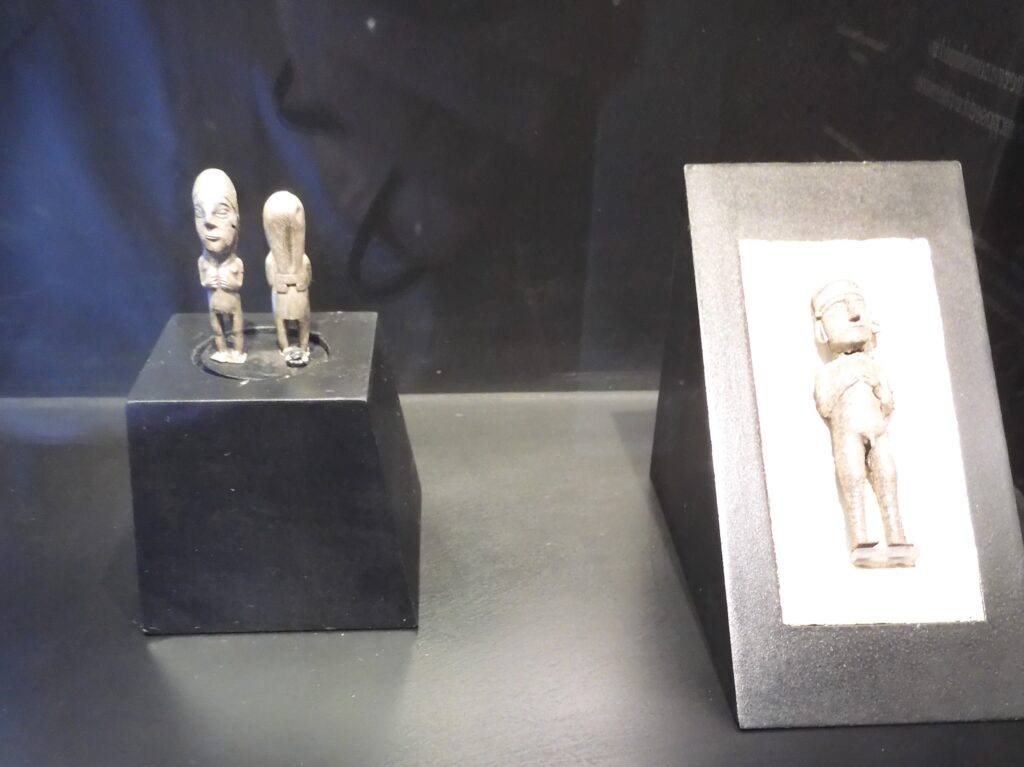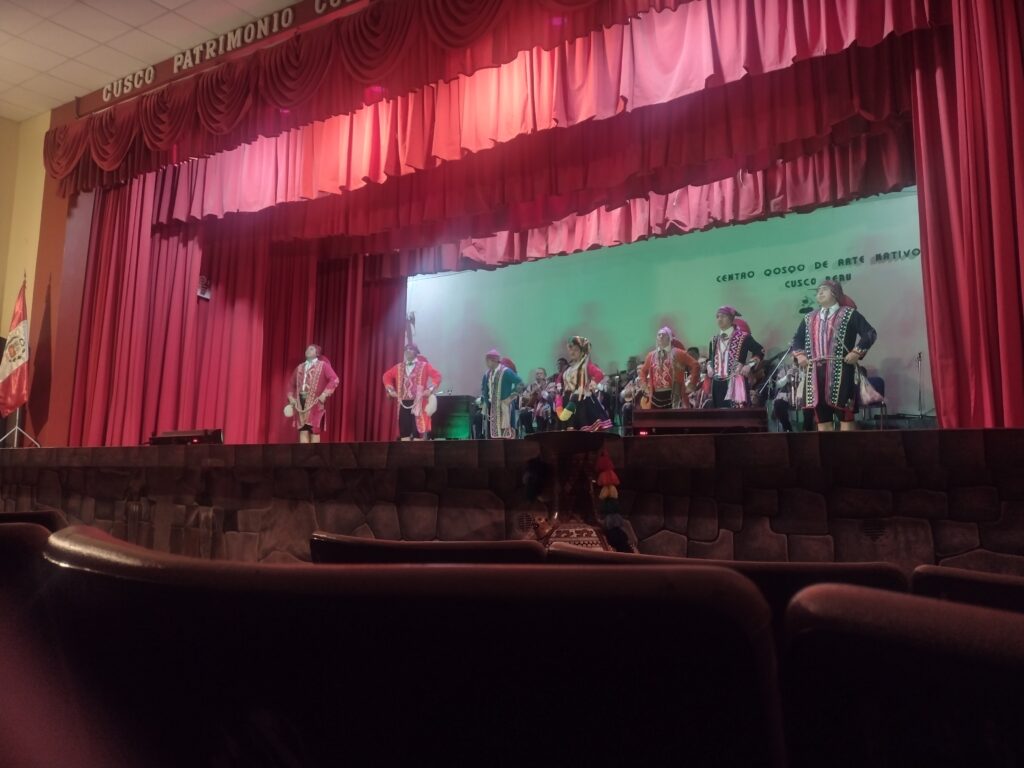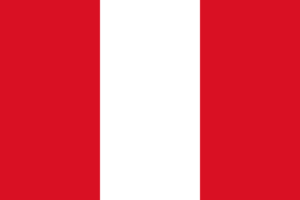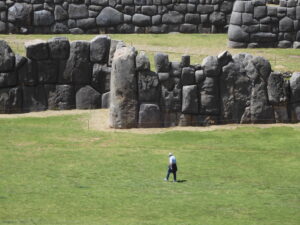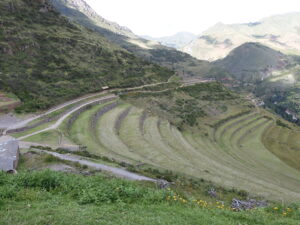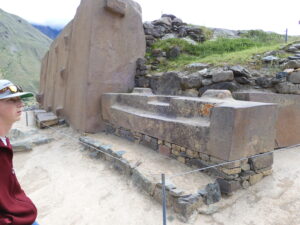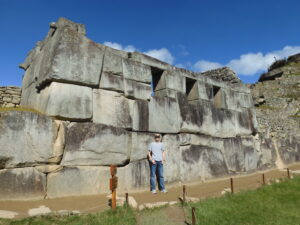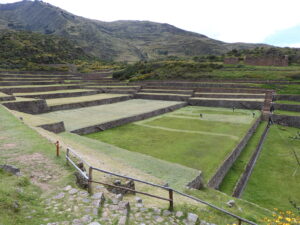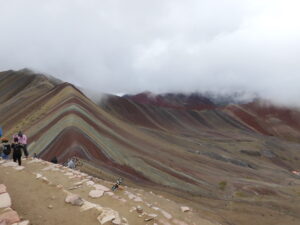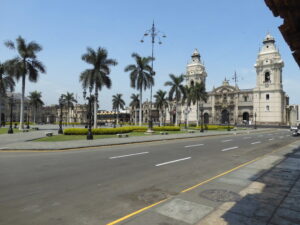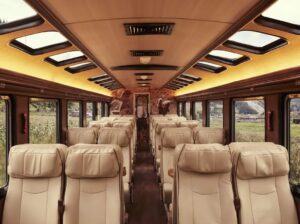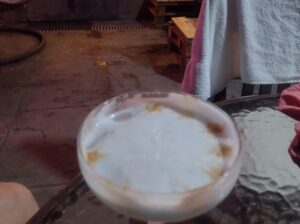Cusco
Seeing the Rest of the Sites
Our time in Cusco was rapidly winding down. I had spent most of Friday helping my dad figure out how to get back to California on a same-day flight. He had a minor medical issue he was not comfortable seeking treatment for in Peru. He was flustered, and marginal phone service made it difficult for him to get a hold of his travel agent or the help line for his travel insurance. I helped him contact them all, but ultimately, it fell to me to find him a flight home that left the same day. We arranged all of this, and I escorted him to the Cusco airport to begin the first of a four leg trip that brought him safely back to Fresno by the following day.
We knew we would go back to the Iglesia de Cristo at Wanchaq Sunday morning. That left Preston, Andrew, and me all day Saturday to do whatever else we were going to do in the Peruvian highlands. We did not leave the old-town area of the city. Saturday turned out to be a potpourri of museums and experiences. Preston and Andrew joined me as they saw fit, with Andrew seeing a few more sites than Preston. Preston was a good sport throughout the trip. As a college freshman, he has gotten used to long nights playing video games and long mornings of sleep. More than once he grumbled quietly to Andrew that the amount of sleep and leisure time he had at home was substantially more than he had on this trip. Preston says he really enjoyed the trip, but he is still learning his own travel preferences and how to navigate sharing those as an adult son. It worked out, since I did not pressure him to participate in activities when he was tired or just plain preferred to rest.
There were a few local museums left on our boleto touristico, along with one performing arts exhibition and a monument near the airport. One of the museums was closed and remains so as of this writing, and the monument was out of the way. As it turned out, the Cusco museums included on our pass were not necessarily the best museums in town. I arranged my visiting order so I could make a reasonable geographic circuit. I walked to the catedral first, because it had the earliest posted opening time. I quickly discovered that was for mass, not tourists. Andrew and I passed a free music show en route to the Museum of Precolumbian Art in the Casa Cabrera, Northeast of the Plaza Mayor. This was a thoughtfully crafted museum, worthy of a 1-2 hour visit. It has a large collection of artifacts from peoples that occupied what is now Peru before the Inca. This museum is not on the tourist ticket, so you’ll have to pay admission.
The Inka Museum is in the same vicinity. It likewise is not on the boleto touristico. The presentation was a little less “slick” than the previously mentioned MAP, but this was also a worthwhile stop with more Inca artifacts. There is enough English signage to get you through if your Spanish isn’t good enough to fully appreciate a museum visit. The museum has two floors, and also merits a 1-2 hour visit.
The Machu Picchu Museum at Casa Concha is Southeast of the square. It contains a sizeable collection of items recently returned from Yale University. Many of these had been collected by Hiram Bingham. This museum has a lot more information about Hiram Bingham, the story of how he encountered Machu Picchu with the help of locals, and the path of conservatorship of many of the items they now hold. There is once again enough English signage to be useful, and you will again have to pay admission even with your boleto toursitico, as this is not a covered museum. I would say this stop should take about an hour. (Continued)
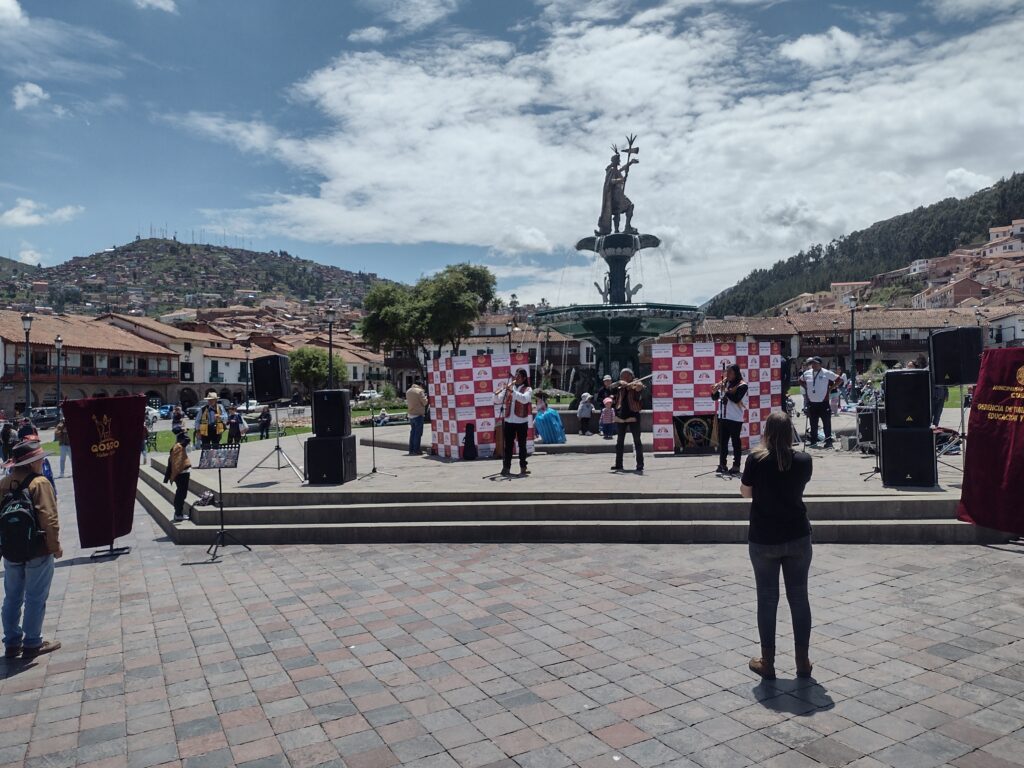
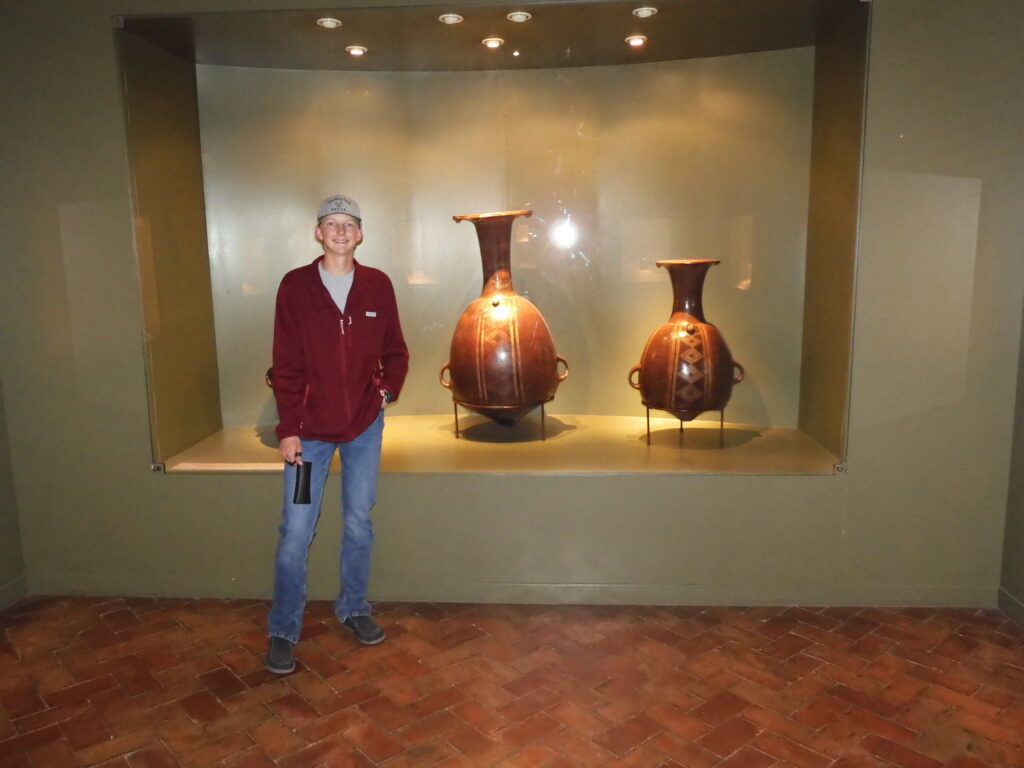
By now it was at least midday, and Preston had joined Andrew and me. We headed back to the cathedral in the main square. This may have been the most expensive tour we paid for on Saturday. It was a large cathedral, and the boys seemed quite impressed with it. I suppose it had a smaller impact on me as I had recently been in several very ornate cathedrals in Spain, with art influenced by the great masters of Europe. Colonial artists were attempting to follow similar patterns with less skill. The most famous piece of art in this catedral in Cusco is a huge painting of the Last Supper with Jesus and the disciples apparently preparing to eat a Guinea Pig (cuy is a popular dish in the Peruvian highlands). Contrary to the assumptions of most modern visitors, Marcos Zapata’s 1753 Last Supper actually depicts a chinchilla about to be partaken of. It is certainly an odd painting, and they won’t let you take pictures of it. It is a testimony to the syncretism that was such a common feature of colonial Catholicism.
By far the most impressive site we visited on this last full day in Cusco was Coricancha. This was the former site of the Inca Sun Temple. In typical Spanish colonial fashion, the conquistadores built their religious building right on the site of the most important indigenous one. The foundations of the old Inca temple are apparent, and the building must have been spectacular. At most of the Inca sites we visited, there was an obvious difference in the stone work between common buildings and those used for nobility, with an even greater degree of care put into religious buildings. All of the remaining stones in this foundation are free from flaws and were hewn to a level of precision that makes them look manufactured. The original building was apparently parabolic for astronomical purposes, and had gold covered walls. Much of the upper portion of the building today is a beautiful monastery grounds. While it does not really deal with this fact, the most powerful statement of this site remains the very intentional Spanish superimposition of their religion and power on the most sacred and significant Inca sites. This location will cost an admission and a couple of hours, but it one of the most important in Cusco and is worth a couple of hours of your time. (Continued)
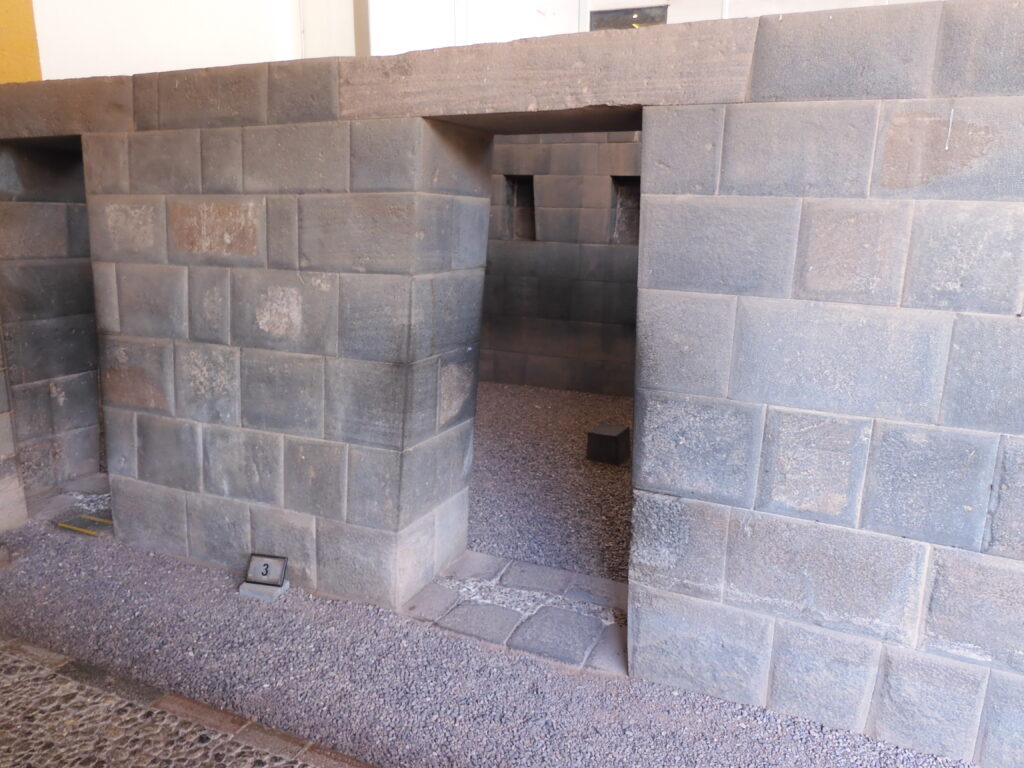
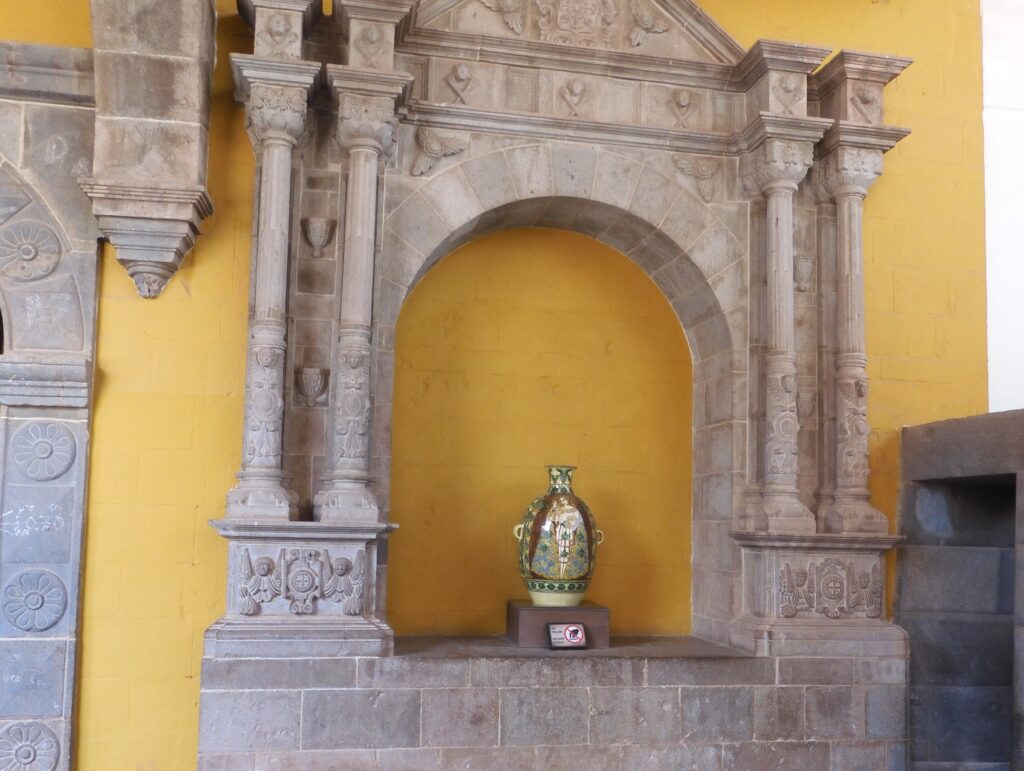

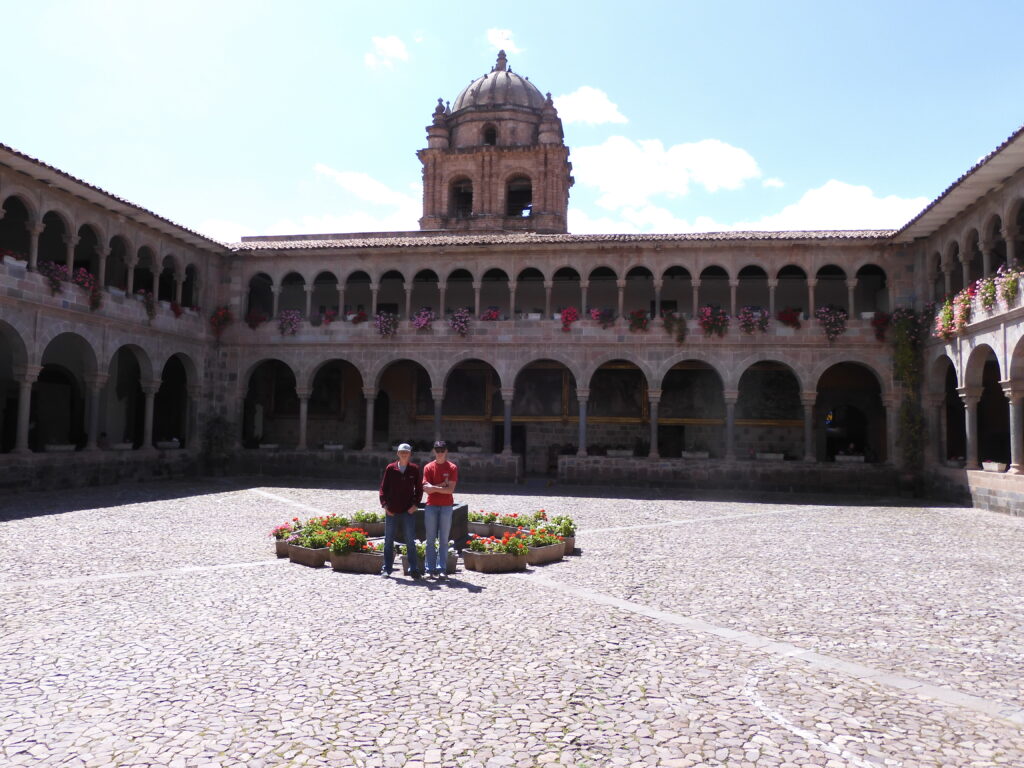
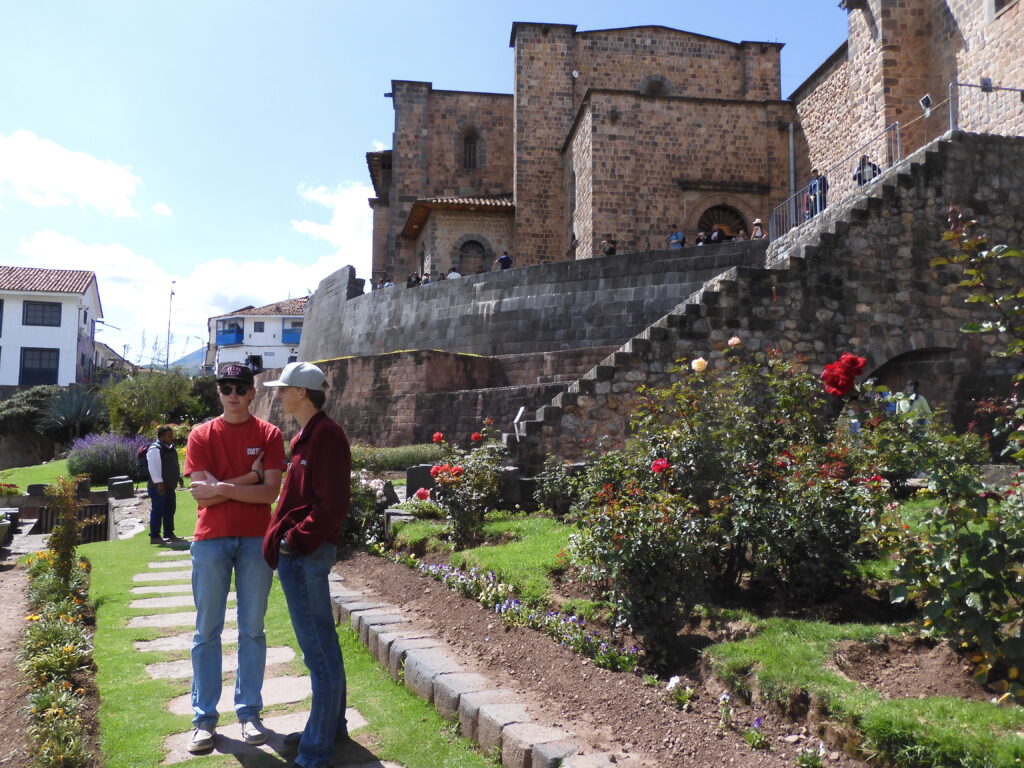
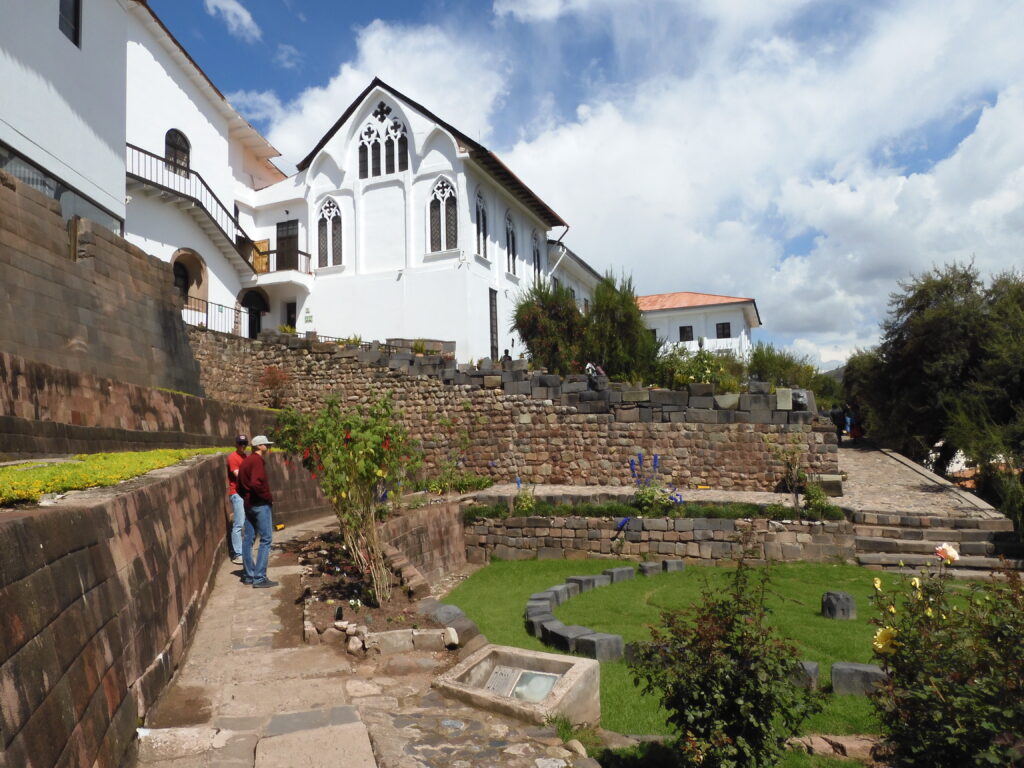
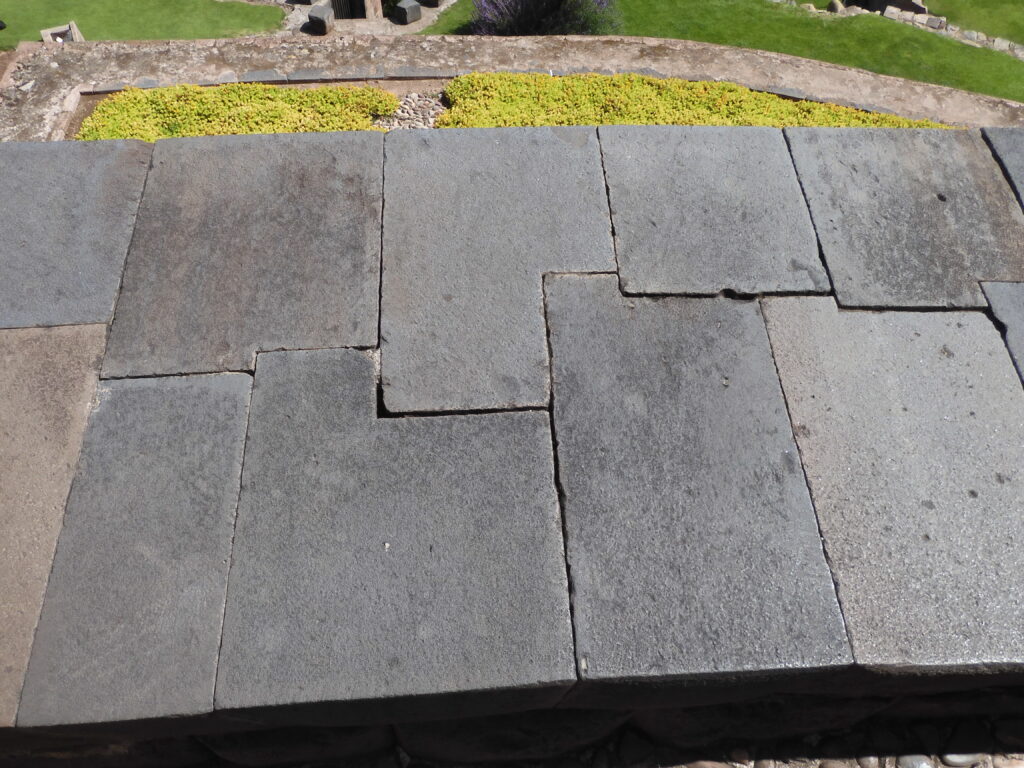
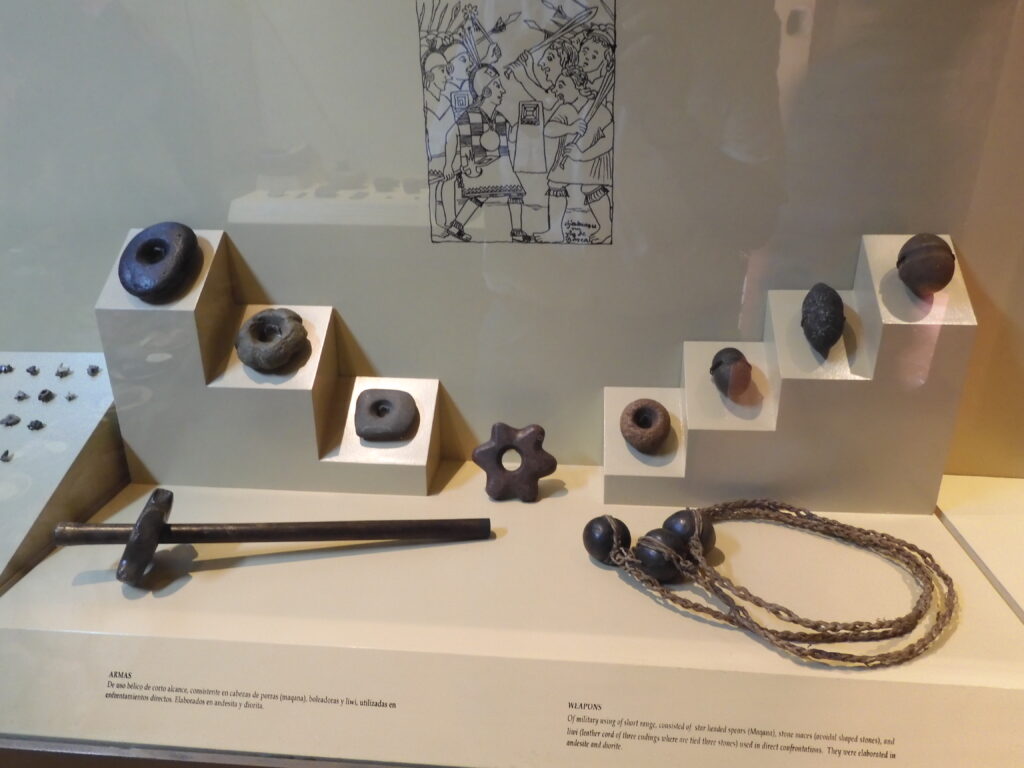
Sometime around this point in the day, Preston and Andrew began to get tired and headed back to the house for a rest before dinner, and our stop at the Center for Performing Arts where we were to watch a presentation at 7:00. I suppose it was a poor financial decision, but it was only after the boys left that I went to the venues we had already paid for with our boletos touristicos. Of those included on your tourist ticket, the Museo Historico Regional at the Casa Garcilaso is best. Although it contains a mixture of artifacts spread over thirteen rooms on two levels, their de facto emphasis is on religious art and Spanish colonial art and cultural objects. It is still a relatively small museum, which can be seen in about an hour, or perhaps an hour and a half if you stop to read placards. It should be noted that unlike most other Spanish-speaking countries I have visited, the majority of the archaeological sites and museums in Peru have Spanish only placards.
As it got closer to supper time, I visited the Museo de Arte Popular. This consists of just a couple of rooms in the basement of the building where you buy the boleto touristico. Since it is convenient and you’ve already paid for it, I doesn’t hurt to walk downstairs to see it, but I would not recommend setting aside even half an hour for it. There are many figurines and building models, but nothing really special.
After we reunited for dinner, we headed to the Performing Arts Center for an hour-long program of native dances and explanations. This is clearly aimed at tourists, and as such it includes English explanations. The music and dance are enjoyable, and even if this would not have been something my teen aged boys would have sought out, they did not hate it. I am fortunate that my children seem to defy the modern stereo type of young people – that they can only be entertained by limited electronic sources. All six of my children have always been impressed by wonders of physical geography, nature, sites of historical significance, and important cultural contributions. I am very thankful for that.
So ended a busy day of visiting what was left to see in Cusco on our last full day in the city. In the morning, we would head to church once again, and then catch a Latam flight to Lima. We thought we had built time in our schedule to grab lunch after church after church on Sunday, but to our surprise there was a baptism that morning! We were overjoyed to forego our lunch in order to join our brothers and sisters in Cusco in welcoming a new child into the family of God.
